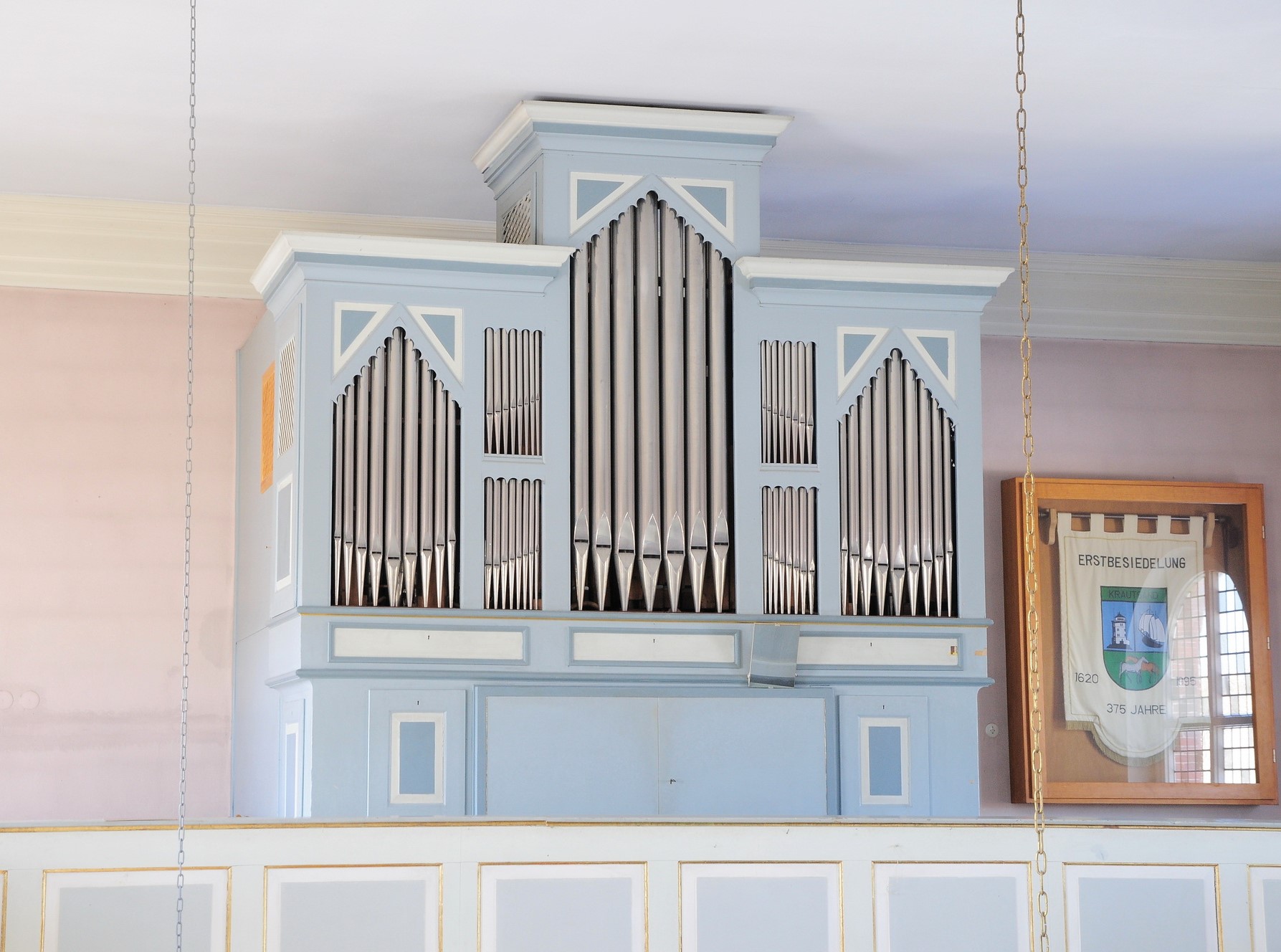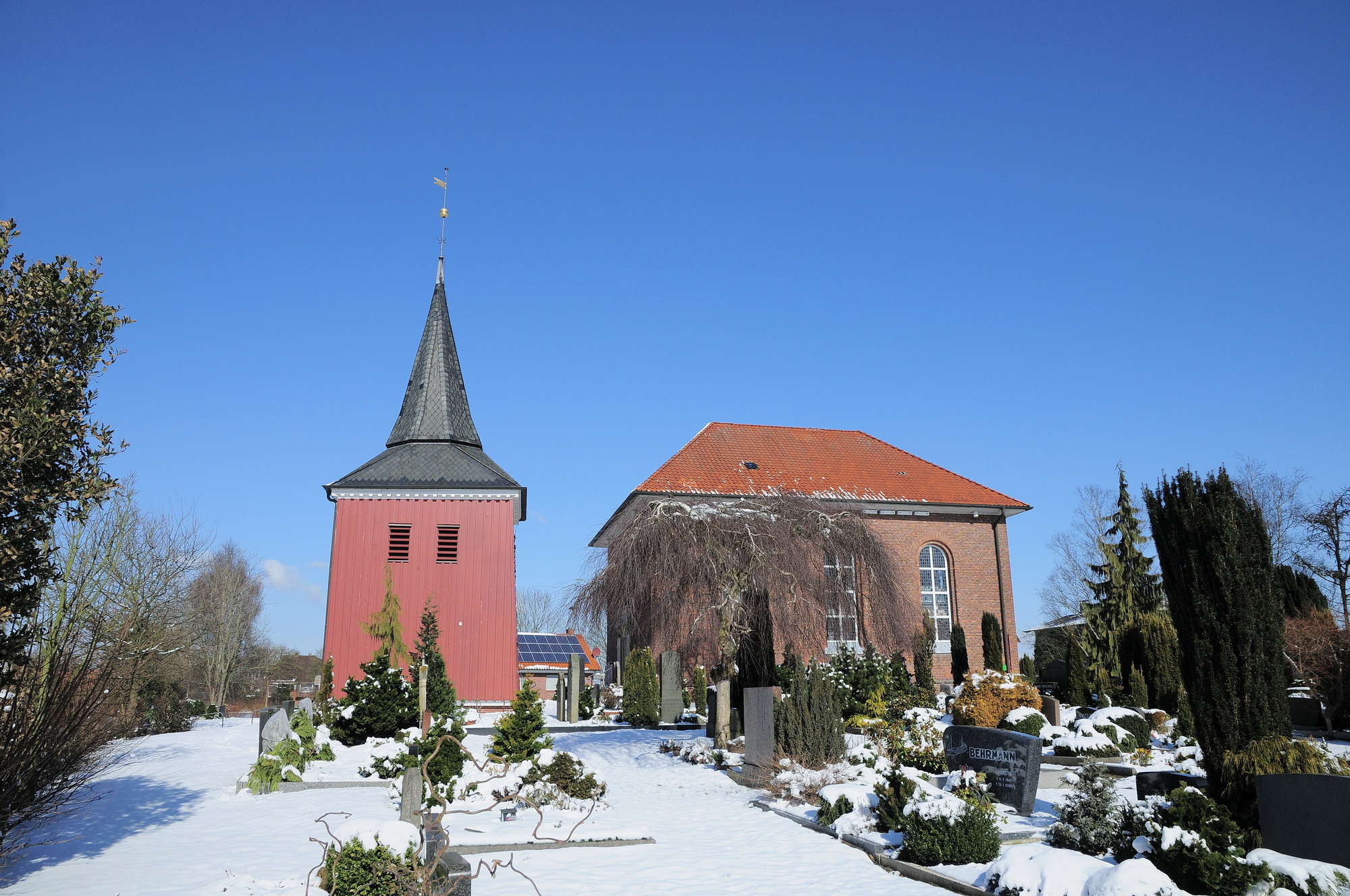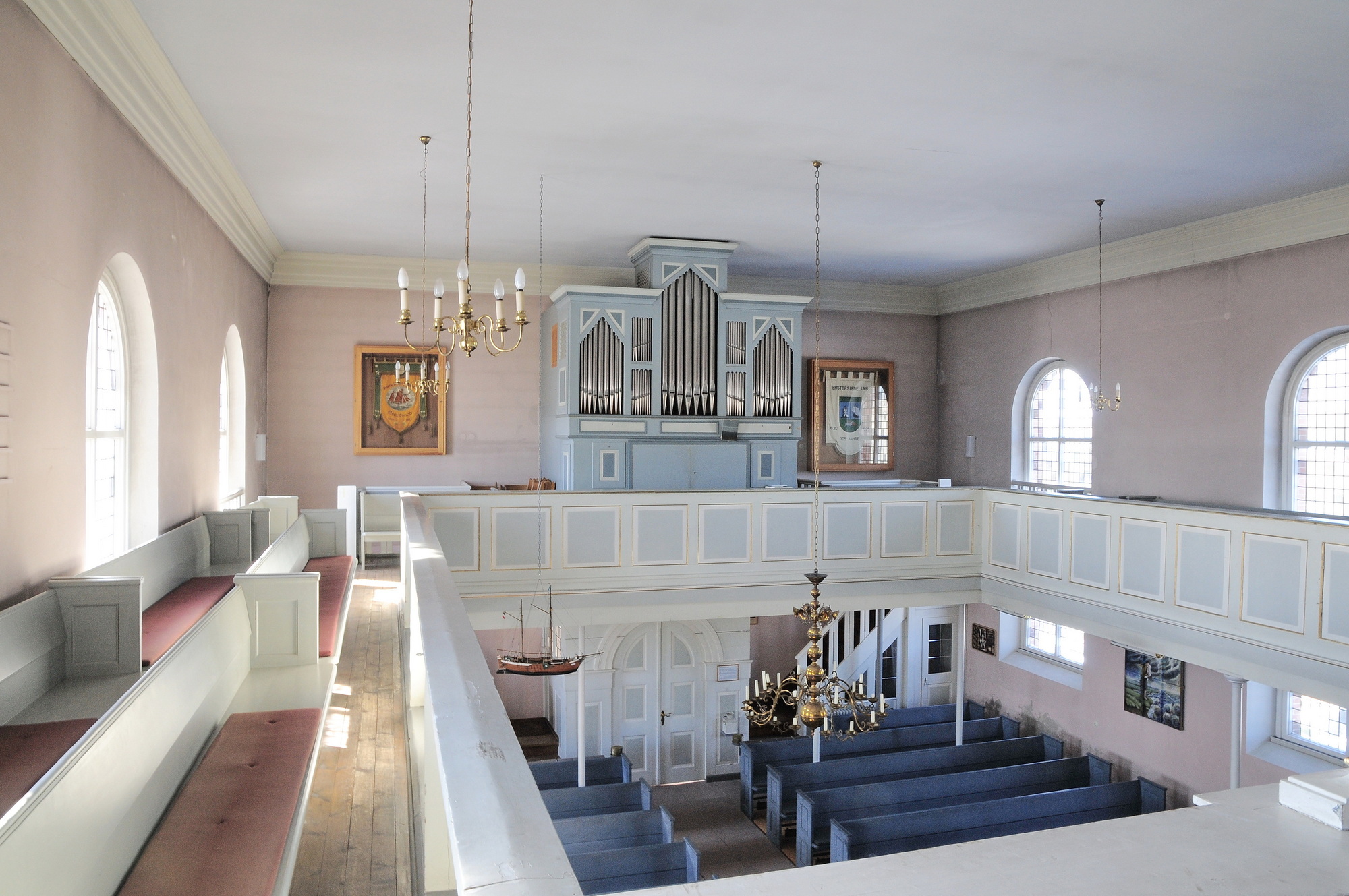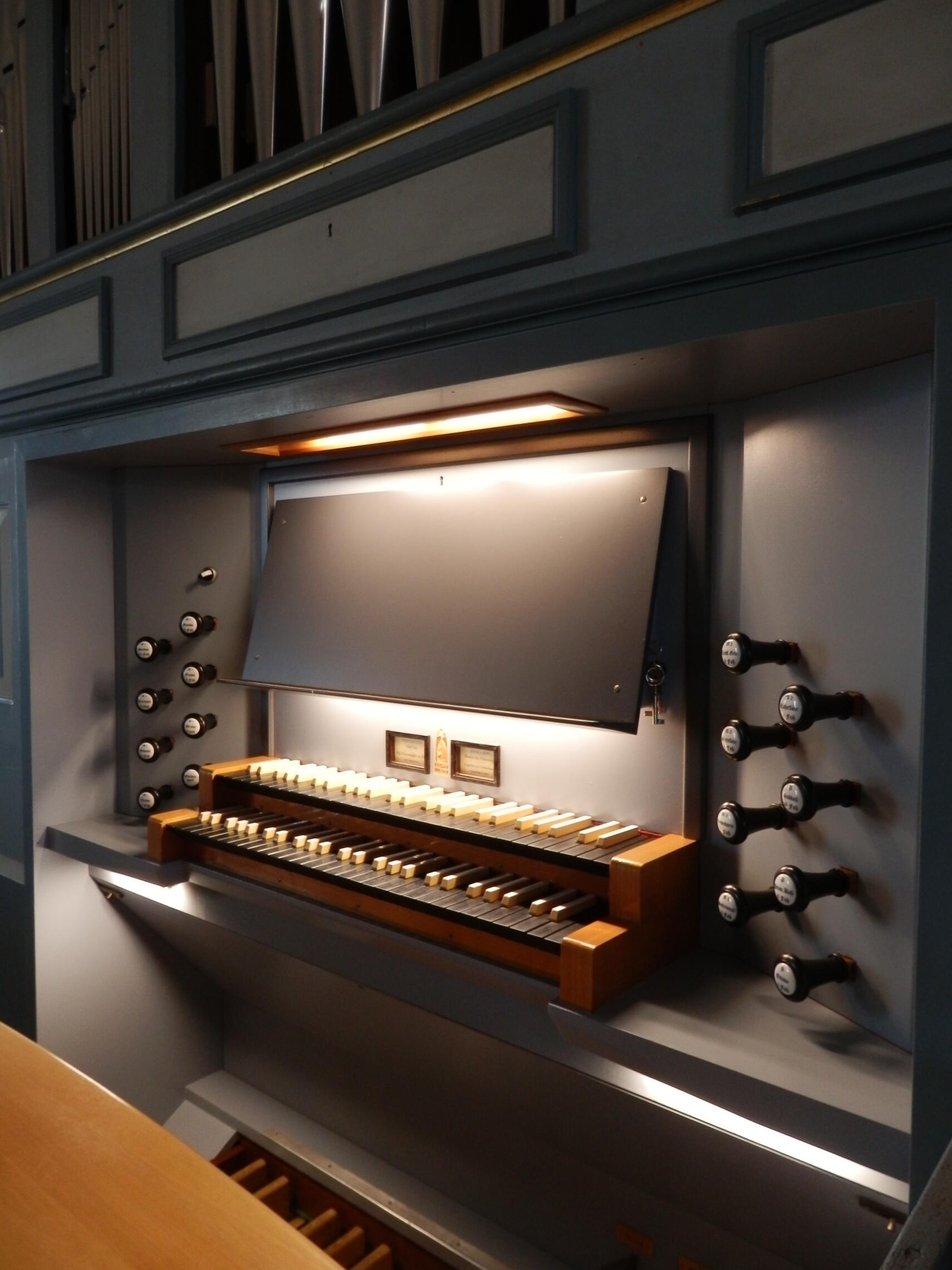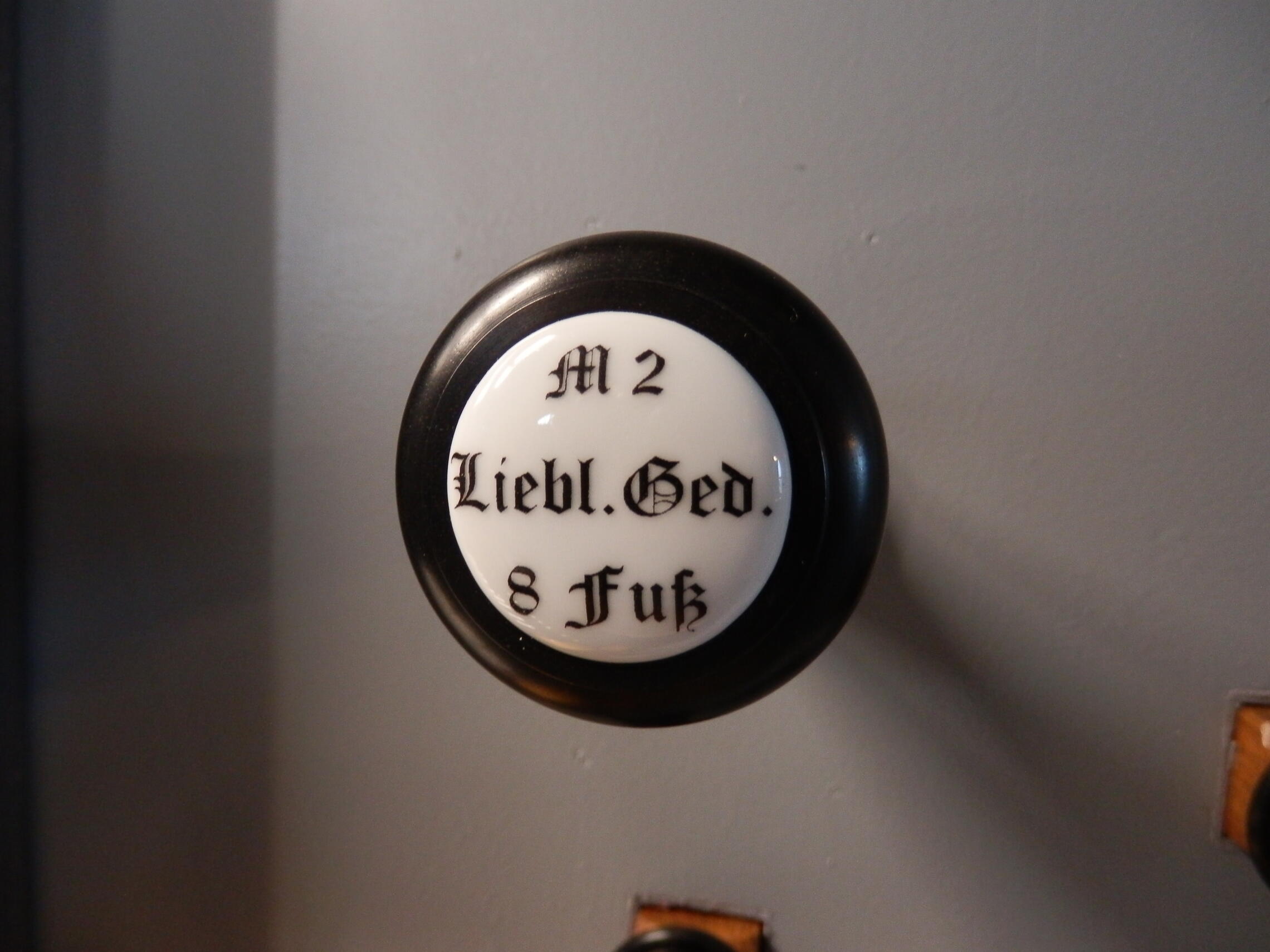Krautsand, Zum guten Hirten
| Builder | Furtwängler & Hammer |
|---|---|
| Year | 1849 |
| Period/Style | Romantic |
| Stops | 15 |
| Keyboards | 2+P |
| Keyaction | tracker/mechanical |
The St. Matthias Church in Krautsand houses an organ built by Philipp Furtwängler in 1848/49. This instrument originally combined baroque traditions with the romantic influences of the 19th century. However, in 1966/67, the organ underwent significant alterations by the firm E. Kemper, which replaced the original Furtwängler disposition with a neobaroque one, resulting in the loss of its original sound character.
In 2019/2020, the organ was thoroughly restored by Martin ter Haseborg of Orgelbau in Ostfriesland. This restoration aimed to return the organ to its original Furtwängler sound while retaining the durable elements of Kemper's modifications, such as the bellows and action. The restoration successfully revived the organ’s historical tonal qualities, allowing it to once again reflect Furtwängler's original vision.
In 2019/2020, the organ was thoroughly restored by Martin ter Haseborg of Orgelbau in Ostfriesland. This restoration aimed to return the organ to its original Furtwängler sound while retaining the durable elements of Kemper's modifications, such as the bellows and action. The restoration successfully revived the organ’s historical tonal qualities, allowing it to once again reflect Furtwängler's original vision.
| Manual I (Hauptwerk) | Manual II (Hinterwerk) | Pedal |
|---|---|---|
| Bordun 16' | Liebl. Gedackt 8' | Subbaß 16' |
| Prinzipal 8' | Spitzflöte 8' | Prinzipalbaß 8' |
| Gedackt 8' | Salicional 8' | Oktave 4' |
| Viola di Gamba 8' | Rohrflöte 4' | |
| Oktav 4' | Gemshorn 2' | |
| Oktav 2' | ||
| Mixtur 2' 4f |
No Video/Audio samples available.
https://nomine.net/orgel/krautsand-zum-guten-hirten/
 Pipe Organ Map
Pipe Organ Map